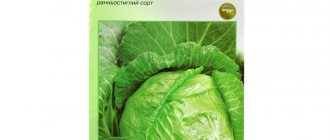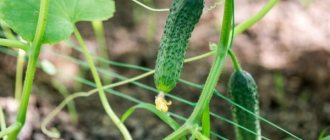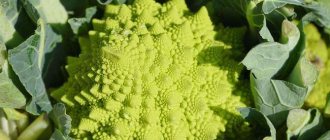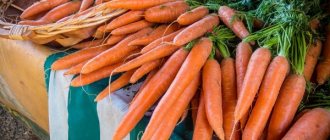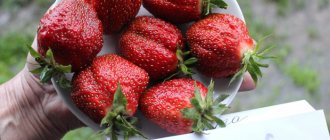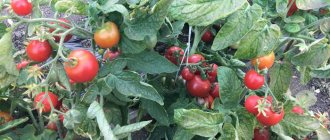White cabbage is a widespread garden crop. It has been cultivated all over the world since ancient times and is valued for its taste, benefits, productivity, ability to be stored for a long time, low cost of cultivation and the ability to be used in a variety of dishes, including medicinal nutrition.
And also - for the variety of varieties and hybrids, among which each gardener can choose exactly those that he needs specifically - early or late, with small or large heads of different densities, the most productive, for pickling and pickling or for storage...
If you're still looking for those same varieties of cabbage, we can help you. To do this, we decided to check the reviews of gardeners over the past months and compiled for you a kind of general rating of those varieties and hybrids of this vegetable that last year received the best rating from summer residents based on a combination of different parameters. Moreover, please note that among these were both promising new products and varieties that were bred quite a long time ago, but are still very popular and traditionally in demand (“golden fund”).
Cabbage Gift (Gift 2500, Gift 3200)
A mid-late variety of Soviet selection.
The head weighs 2.4-4.4 kg, round and round-flat in shape, very dense, semi-closed, greenish-white in cross section, the inner stalk is of medium length. The leaves are juicy, with a slight waxy coating, and excellent taste.
The variety is high-yielding, unpretentious in cultivation (seedlings are frost-resistant), well resistant to diseases and pests, and resistant to cracking. Ripens together, does not like lack of watering.
Recommended for fresh consumption, pickling, pickling, excellent storage for six months. Transportability is good.
Summary table of hybrid characteristics
| Variety or hybrid | hybrid |
| Ripening time | mid-season |
| Kochan | round, dense |
| Kocheryzhka | short |
| Disease resistance | high resistance to diseases and pests |
| Fruit weight, g | 1500-4000 |
| Growing areas | the entire territory of the Russian Federation, as well as Ukraine, Kazakhstan and many other countries |
| Disembarkation scheme | 50cm x 50cm |
| From germination to ripeness | 120-140 days |
| Seed placement depth | 0.5-1.0 cm |
| Seedling age | 40-45 days |
| Soil temperature for planting seeds/seedlings | +4/+12 |
| Advantages | Uniformity, uniform yield, resistance to cracking, good transportability, excellent commercial qualities, not afraid of thickening |
| Flaws | needs feeding, is light-loving and moisture-loving |
Did the article help you?
Cabbage Sprinter F1
Ultra-early ripening hybrid of Russian selection.
The head weighs 1-1.5 kg, oval in shape, quite dense, semi-closed, milky yellow in cross section, the inner stalk is short in length. The leaves are tender, with a slight waxy coating, the taste is excellent, sweetish.
The hybrid is high-yielding, but requires fertile soils, the degree of disease damage is average (only against the backdrop of poor agricultural technology), moderately resistant to pests, and resistant to cracking. It ripens well, tolerates compacted plantings, does not like heat and lack of watering.
Recommended for fresh consumption.
Secrets of cultivation
When growing Krautman F1 cabbage, the seedling method is used. Sowing seeds for seedlings can be done in early April. They should be deepened into the ground by 0.5-1 cm. Shoots may appear as early as 5-6 days. The plant needs to be planted in open ground at the end of May, usually on the 40-45th day. By this time, the seedlings have several true leaves. The best scheme for growing cabbage is 50×50. Before transferring seedlings to a permanent place, it is necessary to carry out hardening procedures. Leave plants outside during the day. The seedlings also need to be fed. Apply the first fertilizing when two leaves appear, the second immediately before planting.
The variety produces a good harvest on loamy, fertile soils. Cabbage cannot be cultivated in the same areas for another 3 years. The best predecessors are legumes and pumpkins.
Cabbage Severyanka F1
Mid-late hybrid of Russian selection.
The head weighs 2.4-4 kg, round in shape, very dense, white in cross section, the inner stalk is short. The leaves are juicy, crispy, and have excellent taste.
The hybrid is high-yielding, unpretentious in care, resistant to fusarium wilt, clubroot, bacteriosis, tolerates temperature changes well, and is resistant to cracking. Ripens together, does not like lack of watering.
Recommended for fresh consumption and processing, it lasts for a long time on the vine, and is perfectly stored for six months.
Hybrid care
This variety of cabbage loves water. Therefore, it needs to be watered on a regular basis.
You need to water the cabbage with settled warm water (in no case from a well) every few days. At least 1 bucket of water is poured per 1 m2. The vegetable is watered more intensively during the formation and development of heads of cabbage. A month before harvest, the amount of watering is reduced, and 2 weeks before the planned harvest, it is stopped altogether. This will ensure longer shelf life and preservation of the standing head of cabbage.
We recommend reading: Description of the cabbage variety Rinda F1
In addition to watering, the vegetable also needs high-quality fertilizing. They have a good effect on cabbage yields. The crop is fertilized for the first time 2-3 weeks after transplanting the seedlings into the exhaust zone. The vegetable is fertilized a second time 3 weeks after the first.
During the first feeding, the following composition is used as fertilizer: 1 part mullein is mixed with 8 parts water (bird droppings can be used similarly (only in a ratio of 1:12). For each seedling, 0.5 liters of solution is used.
The second time the cabbage is fed with the same composition, only 1 bush requires up to 1 liter of solution.
Don't forget about loosening. This is an equally important agrotechnical procedure that can significantly increase cabbage yields. Loosening performs at least 2 functions:
- Improves oxygen access to the plant root system.
- Protects the plant root from insect invasions.
They loosen the soil to a depth of 5 cm. At the same time, all weeds growing next to the crop are removed.
Also, cabbage is hilled twice a season.
Cabbage Aurora F1
Early maturing hybrid of Russian selection.
The head weighs 0.9-1.7 kg, round in shape, quite dense, partially covered, light white-greenish in cross section, the inner stalk is short in length. The leaves are very juicy, crispy, have an excellent, delicate taste.
The hybrid is high-yielding, relatively resistant to bacteriosis, not afraid of the vagaries of the weather, and resistant to cracking. Ripens together, does not like lack of watering.
Recommended for fresh consumption, can be used for processing.
Cold resistance
Depending on the variety, cabbage may be more or less resistant to temperature changes. Late-ripening varieties can withstand air temperatures down to -10 degrees, and mid-ripening varieties - down to -5.
Frost resistance increases with plant growth; for example, seedlings die at an air temperature of 3 degrees.
It is also worth noting that varieties tolerate cold weather more resistantly, unlike hybrids. The most frost-resistant varieties of cabbage include “Zimovka 1474”, “Geneva” and “Aros”.
Cabbage Snowflake F1
Mid-late hybrid of Russian selection.
The head weighs 2-3 kg, round in shape, quite dense, compact, white in cross-section, the inner stalk is short in length. The leaves are juicy, with a strong waxy coating, with a very high sugar content, the taste is excellent, sweetish.
The hybrid is high-yielding, highly adaptable to climatic conditions, susceptibility to diseases and pests is average, and resistant to cracking. It ripens well, tolerates compacted plantings, and does not like lack of watering.
Recommended for fresh consumption and processing. Doesn't last long.
Reviews
The described hybrid is often mentioned by experienced farmers when reviewing the best varieties with fast ripening times. However, reviews about it are rare on the forums of ordinary gardeners. Opinions about the vegetable are as follows:
- Summer resident Evgeniya wrote that cabbage has a “heavy” yield.
- Vegetable grower Georgy is pleased with the taste characteristics and universal use of the heads.
- A novice gardener from Krasnoyarsk confirmed that the variety ripens early.
Gardeners also note that the seeds germinate well. In their opinion, this is due to the relatively large size of the seeds.
Cabbage Magnus F1 is an unpretentious early hybrid. It does not take up much space in the beds and can be grown twice per planting season. This variety is no less beneficial for the consumer than for the farmer, since it can be used for a large number of dishes.
Cabbage Slava (Slava 1305)
Mid-season variety of Soviet selection.
The head weighs 2.5-4.5 kg, round-flat in shape, very dense, yellowish-white in cross section, the inner stalk is of medium length. The leaves are juicy, with a wavy edge, with a medium-intensity waxy coating, and excellent taste.
The variety is high-yielding, unpretentious in cultivation and highly adaptable to climatic conditions, but weakly resistant to diseases and prone to cracking if harvested untimely. Ripens together, does not like lack of watering.
Recommended for fresh consumption, pickling and pickling. Suitable for transportation and short-term storage for 3 months.
Advantages and disadvantages
Krautman's description of cabbage implies a listing of all the positive and negative qualities of the product.
Compared to other varieties of mid-season white cabbage, the hybrid has its advantages:
- The main advantage of Krautman F1 cabbage is considered to be its high content of vitamins A and C, minerals and nutrients. According to these indicators, the variety is superior to cauliflower.
- Heads of cabbage can remain on the root for a long time without cracking. They are also not subject to rotting.
- The leaves of the hybrid are crispy and very juicy.
- The vegetable easily tolerates transportation.
- Krautman is not susceptible to diseases and is resistant to various pests. Even the keel is not afraid of him.
- Cabbage has excellent pickling qualities.
- The variety can be used for pickling. The product has a pleasant acidic taste.
- Friendly and timely delivery of the harvest simplifies the process of harvesting and preparing for storage.
- It is possible to achieve a high yield even in bad weather conditions and sudden temperature changes.
- Excellent external data allows you to successfully sell the product on the market.
Experienced vegetable growers note that the heads of cabbage of this variety are very dense, but the leaves are not coarse, but soft and juicy.
The hybrid is quite flexible. Gives good results in various regions. It can even withstand dense plantings.
The heads of cabbage of this hybrid are aligned in size, which is convenient for transportation. Such compact specimens are convenient to grow, collect and send for sale. They are in demand among consumers.
Among the disadvantages in the description of Krautman cabbage, one can note the short shelf life of collected vegetables (maximum 4-5 months). But all mid-season cabbage varieties cannot boast of this indicator.
The hybrid is also demanding on certain growing conditions. In order for a plant to form a powerful root system, it is necessary to carry out a number of actions: proper watering, hilling, loosening and weeding. Cabbage must be fed with mineral fertilizers. Provide a sunny, unshaded area that is well ventilated. Seedlings should not be allowed to be pulled out.
Moscow cabbage late 15
Late-ripening variety of Soviet selection.
The head of cabbage weighs 3.3-4.5 kg, round and round-flat in shape, quite dense, white-yellow in cross-section, the inner stalk is of medium length (in the garden the head of cabbage can fall on its side due to the high outer stalk). The leaves are juicy, with a slight waxy coating, and excellent taste.
The variety is high-yielding, but requires fertile soils, as well as high hilling or the use of support. Resistant to pests and clubroot, as well as cracking. It ripens together, does not tolerate compacted plantings, and does not like lack of watering.
Recommended for fresh consumption and pickling, it can be stored perfectly for six months. Transportability is average.
Snowball
Farmers appreciate the productive early cabbage Snowball for its short growing season. Cauliflower fruits ripen in no more than 90 days. If you create comfortable conditions for the plants, the harvest can be obtained as early as 80 days after sowing the seeds. Snowball is suitable for cultivation even in Siberia, but in regions with cold climates the vegetable crop is grown in greenhouses.
Already from the name it is clear that during formation the fruits acquire a rounded shape. They weigh about 1 kg. Sometimes the fruit weight reaches 1.7-2 kg. The vegetable yield is 4 kg per 1 sq. m. Medium-sized inflorescences are painted white and fit tightly to each other.
The inflorescences can be frozen, used for cooking or canning. Due to the increased content of natural sugar, they have excellent taste.
Features of cultivation
Super early vegetable crop needs quality care. Caring for Snowball includes regular watering, weeding and loosening the soil. Excess moisture, like its lack, has the same negative effect on the plant. The vegetable needs feeding and does not tolerate frost well, so in cold regions with short summers, the ultra-early vegetable crop is grown under cover.
Advantages
Snowball is resistant to many diseases, which makes it easy to grow. Plants ripen almost simultaneously. The vegetable crop is resistant to temperature changes and produces stable yields from year to year.
Kill-resistant varieties of white cabbage
When the acidity of the soil in the area is very high, many varieties of cabbage begin to suffer from clubroot. These are large growths on the roots that slow down the growth of plants and prevent them from producing a good harvest. To the delight of summer residents, varieties resistant to this disease have already been bred. Of course, they are not 100% protected from the disease, but they are tens of times more resistant to it.
The causative agent of clubroot is found in the soil. This is a single-celled fungus, which is the causative agent. The following varieties are resistant to clubroot formation: Ladozhskaya 22 (mid-season), Losinoostrovskaya 8 (mid-late), Zimnyaya Gribovskaya 13 (mid-late).
You will see the most popular varieties of cabbage from the photo with the supply conveyor. On it we indicated the most popular varieties and the timing of their delivery to stores. They appear on the beds around the same time.
| Tweet |
